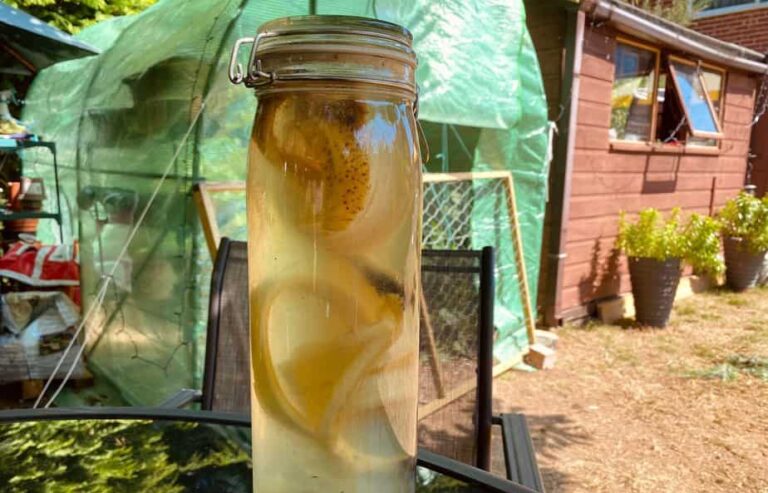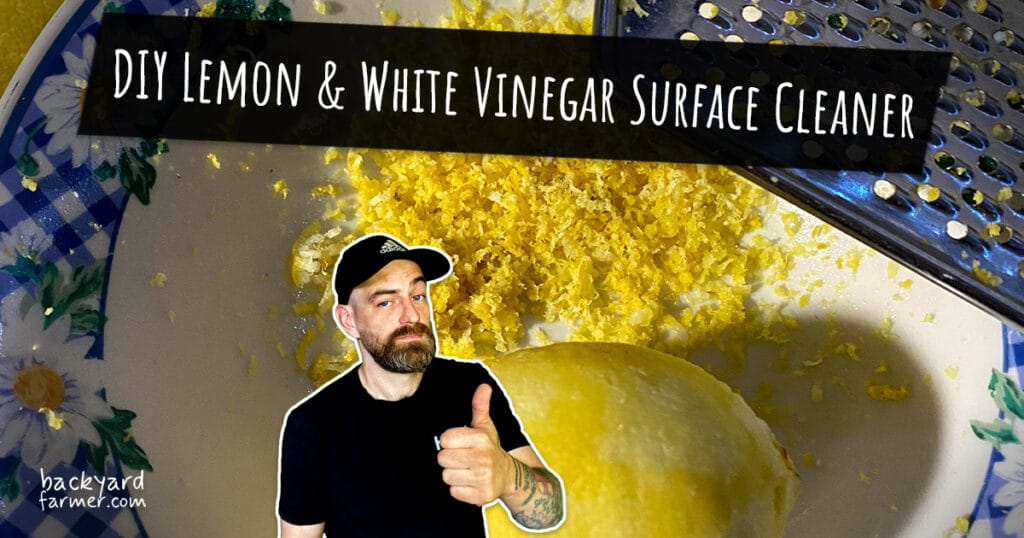Table of contents
- Introduction
- What Is Banana Peel Fertiliser?
- What Nutrients Are in Banana Peels?
- How to Make Banana Peel Fertilizer
- How to Use Banana Water on Plants
- What Plants Benefit Most from Banana Peel Fertilizer?
- Banana Peels in the Garden: Other Uses
- Pros and Cons of Banana Peel Fertiliser
- FAQs About Banana Peel Fertilizer
- Final Thoughts
Introduction
Banana peel fertiliser has become a go-to method for gardeners looking to reuse kitchen scraps and boost plant growth naturally. While banana peels were once tossed straight into compost bins, they’re now gaining attention as a stand-alone, DIY fertiliser. Often referred to as “banana water,” this homemade plant booster is praised for being cheap, easy to make, and surprisingly nutritious.
But does banana peel fertiliser actually work?
In this article, we’ll cover everything you need to know about banana peel fertiliser, including:
- Whether banana water is a helpful garden hack or just hype
- What nutrients banana peels actually offer your plants
- A simple step-by-step method for making banana water
- Which plants benefit the most from it
- How and when to use it—plus why it’s usually better outdoors
Whether you’re new to gardening, passionate about sustainability, or simply want to make more of your food waste, this guide will help you turn banana peels into a practical and powerful garden ally.
What Is Banana Peel Fertiliser?
Banana peel fertiliser is a natural, homemade plant feed made by steeping banana peels in water. Often referred to as “banana water,” it acts like a compost tea alternative—drawing nutrients from organic matter and delivering them to your plants in liquid form.
As the peels soak, they release valuable minerals like potassium, phosphorus, and magnesium into the water. You can pour this nutrient-rich liquid around your plants or apply it as a diluted foliar spray. It’s one of the simplest ways to use a banana peel as fertiliser.
Unlike synthetic products, banana peel fertiliser is 100% natural and fully biodegradable. That’s why it’s a favourite among sustainable gardeners, zero-waste households, and anyone looking to cut back on chemical feeds.
So, what is banana peel fertiliser used for? Mainly, it gives flowering and fruiting plants a gentle nutrient boost. However, because it lacks nitrogen, it works best when paired with compost, worm castings, or another nitrogen-rich fertiliser.
In short: Banana peel fertiliser is an easy, eco-friendly way to reuse kitchen scraps and support plant health without spending a penny.
Does Banana Peel Fertilizer Work?
Yes—banana peel fertilizer works as a mild, nutrient-rich supplement, but it won’t replace a complete fertiliser.
That said, there are a few important caveats. Banana peel fertilizer provides several essential minerals—especially potassium, which supports flowering, fruiting, and overall plant health. You’ll also get smaller amounts of phosphorus, calcium, magnesium, and sulfur, all of which contribute to healthy growth.
However, banana peel fertilizer is not a complete feed. It lacks nitrogen, a key nutrient for leafy growth and strong stems. Because of this, banana water works best when paired with compost, worm castings, or other nitrogen-rich fertilizers to create a balanced nutrient profile.
So, do banana peels make good fertilizer? Yes—when used appropriately. They’re a helpful, natural way to supplement your plants with essential minerals, but they shouldn’t be your only source of nutrition.
Many gardeners report stronger, more vigorous plants after using banana water regularly—particularly for tomatoes, peppers, and roses. While there’s limited scientific research on homemade banana fertilizers, the nutrient content is well-documented, and fermentation may make those minerals easier for plants to absorb.
When It Works Best
- Outdoors (to help avoid mould buildup)
- As a weekly or bi-weekly booster
- Combined with nitrogen-rich compost
- On flowering or fruiting plants
When It’s Not Ideal
- As the sole fertilizer for leafy greens or heavy feeders
- On indoor plants prone to mould or pests
Bottom line: Banana peel fertilizer can definitely support plant health—but only when used correctly. It’s a gentle, natural booster that works best alongside a complete feeding routine. Whether you’re applying banana peel as fertilizer or using banana water, consistency and balance are key.
What Nutrients Are in Banana Peels?
Banana peels contain a surprising mix of nutrients that support flowering, fruiting, and overall plant health.
They might look like ordinary kitchen scraps, but banana peels are loaded with plant-friendly minerals. While they don’t offer a complete nutrient profile, they deliver a solid combination of essential elements that promote healthy growth and development.
Let’s take a closer look at what’s inside:
| Nutrient | What It Does for Plants |
| Potassium (K) | Boosts overall plant health, strengthens stems, and supports flowering and fruiting |
| Phosphorus (P) | Promotes strong root growth and improves flower and fruit production |
| Calcium (Ca) | Strengthens cell walls and helps with root and shoot formation |
| Magnesium (Mg) | Fuels photosynthesis and encourages vibrant green leaves |
| Sulfur (S) | Supports enzyme activity and root development |
These nutrients are especially useful during the flowering and fruiting stages. That’s why banana peel fertiliser is such a hit for crops like tomatoes, peppers, cucumbers, and many flowering ornamentals. If you’ve ever wondered about the nutrients in banana peels, now you know they offer much more than just potassium.
That said, banana peels don’t contain nitrogen, which is essential for leafy growth. If your plants are showing signs of nitrogen deficiency—like pale leaves or slow growth—pair banana water with compost, worm castings, or another nitrogen-rich fertiliser.
Whether you’re making banana water or using a banana peel as fertiliser, think of it as a helpful supplement—not a complete feeding solution.
Pro tip: Soaking or fermenting the peels helps draw out minerals, making them easier for plants to absorb.
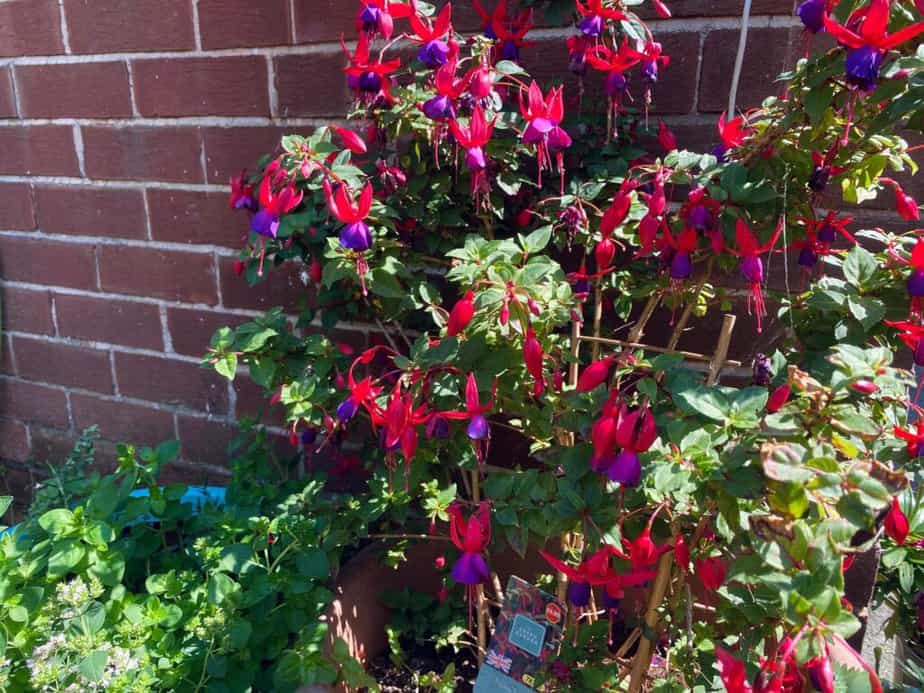
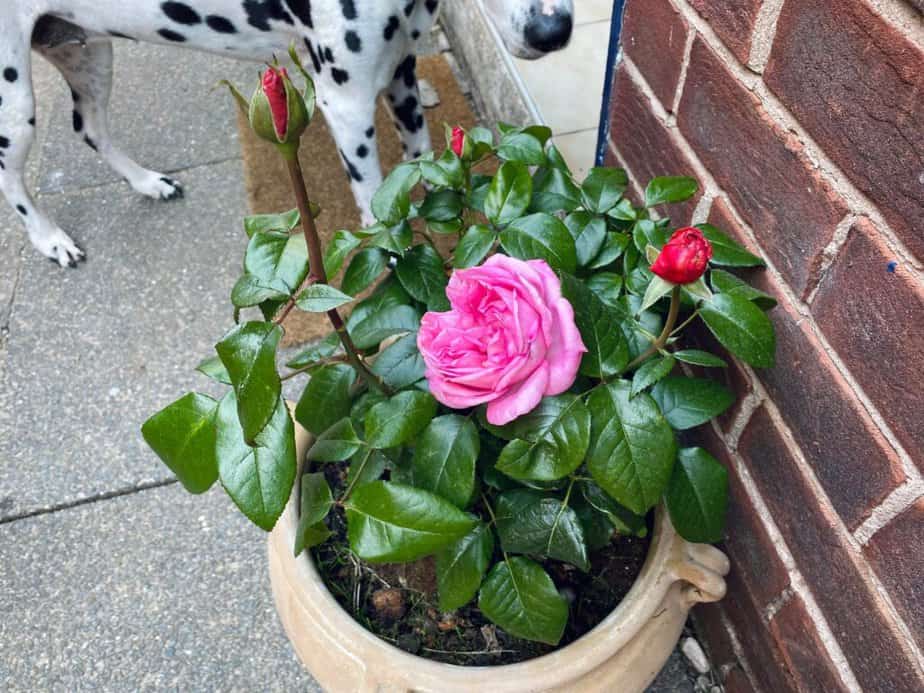
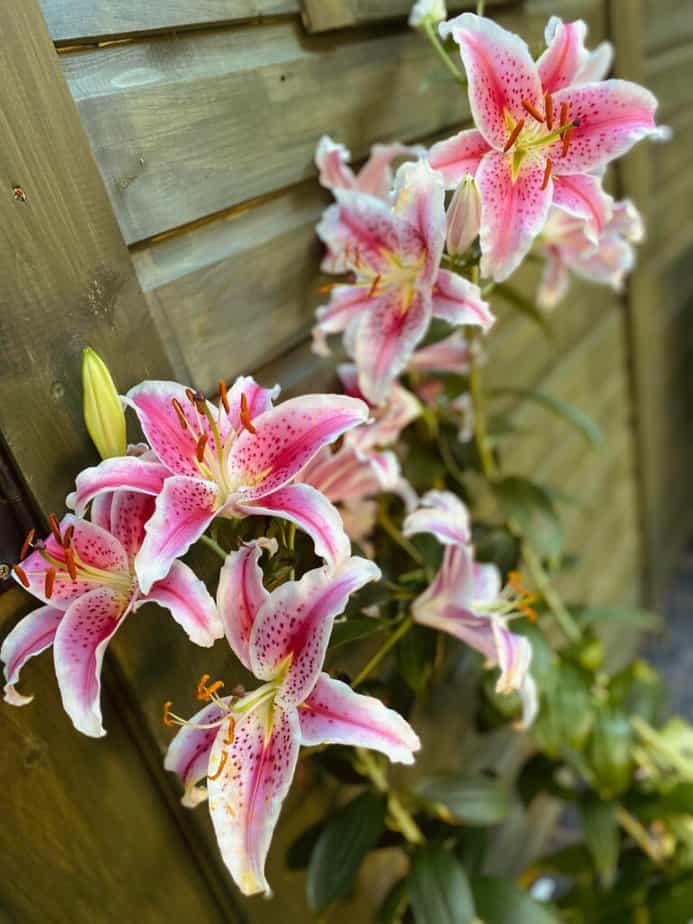
How to Make Banana Peel Fertilizer
Making banana peel fertilizer is one of the easiest ways to turn kitchen waste into a natural, nutrient-rich plant feed.
Creating banana peel fertilizer at home is not only simple and affordable—it’s also surprisingly effective. Whether you’re a beginner or an experienced gardener, this DIY method offers a mild nutrient boost for your plants at virtually no cost.
If you’re wondering exactly how to make banana peel fertilizer, here’s a step-by-step method anyone can follow:
🍌 Banana Water Recipe (Basic Method)
- Eat your banana and chop the peel into 1–2 inch pieces.
- Fill a container (with a loose lid) with 2–3 litres of water.
- Drop the banana peel pieces into the container.
- Let it steep for 1–3 days, opening the lid daily to release fermentation gases.
- Strain the mixture well to remove any pulp or solids before using.
This simple soak creates banana peel water for plants, which you can pour directly into the soil or dilute for foliar feeding.
🧪 Pro Tips:
- Use the mixture within 3 days to prevent over-fermentation.
- Dilute 50/50 with water before applying as a foliar spray.
- Store it in a cool spot and leave the lid loose to allow gases to escape.
♻️ What to Do with the Peels Afterwards:
- Chop and bury them directly in your garden beds.
- Toss them into your compost bin.
- Add them to your wormery—worms love banana peels!
This technique works much like a homemade “compost tea.” It’s gentle enough to use regularly throughout the growing season without overwhelming your plants.
Note: From experience, it’s best to use this on outdoor plants—the pulp and sugars can encourage mould in indoor pots.
How to Use Banana Water on Plants
Banana water is a simple, natural way to feed your plants—just follow the right method for your space and plant type.
Once your banana water is ready, how you apply it makes all the difference. If you’re wondering how to use banana water on plants, you’ve got two main options: watering the soil or spraying the leaves. Used correctly, it gives your plants a gentle nutrient boost without any unwanted side effects. Let’s look at how to get the most from it, both indoors and out.
🌱 Method 1: Watering the Soil
- Pour the strained banana water directly onto the soil around your plants.
- Apply in the early morning or late afternoon to reduce evaporation.
- Use it every 1–2 weeks during the growing season for best results.
🌿 Method 2: Foliar Spray
- Dilute the banana water 50/50 with clean water.
- Pour it into a spray bottle and mist both the tops and undersides of leaves.
- Stick to outdoor plants or greenhouse setups with good airflow.
🏡 Indoor Plant Caution
From experience, banana water can encourage mould or fungus on houseplants, especially in stuffy or damp spaces. The sugars and pulp left behind create a perfect breeding ground for mildew.
If you’re applying it indoors:
- Always strain it thoroughly
- Use a fine mist spray bottle
- Limit use to once a month
- Only apply in well-lit, well-ventilated rooms
✅ Best Practices
- Shake the mixture before each use to evenly distribute nutrients
- Avoid pouring directly over leaves unless it’s diluted
- Use on flowering and fruiting plants like tomatoes, peppers, cucumbers, and roses
- Combine with banana peel fertilizer for broader nutrient coverage
What Plants Benefit Most from Banana Peel Fertilizer?
Banana peel fertilizer is ideal for flowering and fruiting plants, but it isn’t suitable for everything in your garden.
This natural fertiliser is particularly helpful for flowering and fruiting plants due to its high potassium and phosphorus content. While it doesn’t provide every nutrient your plants need, it offers a valuable boost—especially when paired with other amendments. If you’re wondering what plants benefit from banana peel fertilizer, it often depends on the plant’s growth stage and nutrient requirements.
Here are some of the top plants that respond well to banana water or banana peel fertilizer:
🍅 Fruiting Vegetables:
- Tomatoes
- Peppers (chilli, bell, etc.)
- Cucumbers
- Courgettes / Zucchini
These crops thrive on the extra potassium during their fruiting phase.
🌸 Flowering Plants:
- Roses
- Geraniums
- Petunias
- Marigolds
They’ll benefit from the added nutrient support for vibrant blooms.
🍓 Fruits and Berries:
- Strawberries
- Raspberries
- Blueberries (use sparingly—these prefer more acidic soil)
Banana water can give a gentle lift during flowering and fruit development.
🌿 Houseplants (Use With Care)
Indoor plants like pothos, peace lilies, and snake plants may benefit from an occasional boost—but only if the banana water is thoroughly strained and used sparingly. Otherwise, mould may develop.
🚫 Plants to Avoid
- Leafy greens like lettuce and spinach, unless combined with nitrogen-rich compost
- Heavy feeders such as corn or brassicas without additional nutrients
Banana peel fertilizer works best as a supplement, not a complete feed. If your plants show pale leaves or sluggish growth, they’re likely low on nitrogen. You can also try using banana peel as fertiliser by burying small pieces near the root zone or mixing them into compost.
Tip: Apply banana peel fertiliser during flowering and fruiting stages for the biggest benefit.
For best results, pair banana peel fertiliser with nutrient-rich soil and good watering habits—especially for heavy feeders like tomatoes. If you’re growing them this season, check out our full guide on How to Grow Tomatoes in the UK for tips on varieties, pruning, and plant care.
Banana Peels in the Garden: Other Uses
Banana peels are more than just compost material—they’re versatile, nutrient-rich, and offer multiple uses across your garden.
Banana peels aren’t just great for making fertiliser—they have plenty of other smart, sustainable uses around the garden. If you’re aiming to reduce waste and build healthier soil, these easy ideas will help you put every peel to good use. In fact, if you’ve ever wondered what to do with banana peels, the options go far beyond the compost heap.
🌿 1. Bury Them Directly in Soil
- Chop the peels into small pieces and bury them 4–6 inches deep near plant roots.
- As they decompose, they gradually release nutrients like potassium and calcium.
- This also improves soil texture and supports beneficial microbes.
♻️ 2. Add Them to Your Compost Bin
- Banana peels count as a “green” material in composting.
- They break down quickly and help balance out “brown” materials like cardboard or straw.
- Plus, they add trace minerals that enrich your finished compost.
🐛 3. Use Them in Your Wormery
- Worms love banana peels—just remember to chop them up first.
- Avoid overloading your worm bin to prevent soggy conditions or fruit fly issues.
🪰 4. Set Up Natural Pest Traps
- Tuck small banana peel pieces under pots to attract aphids—then toss them out.
- Some gardeners also find they help lure away fungus gnats and fruit flies.
🚫 A Few Things to Avoid:
- Leaving whole peels on top of the soil (they attract pests and rot slowly)
- Using non-organic peels in organic gardens—pesticide residue could transfer to your soil
Whether you’re adding them to compost, using banana peel as fertiliser, or setting up natural pest traps, banana peels are a free, easy way to nourish your garden and reduce kitchen waste.
Pros and Cons of Banana Peel Fertiliser
Banana peel fertiliser is a natural, cost-free way to supplement your plants—but it’s not a one-size-fits-all solution.
Using banana peel fertiliser is a clever and sustainable way to recycle kitchen scraps while giving your plants a gentle nutrient boost. However, like most homemade fertilisers, it has its limitations. Let’s take a closer look at the benefits and drawbacks so you can decide if it’s a good fit for your garden.
✅ Pros
- Eco-friendly: Turns food waste into something useful instead of sending it to landfill
- Free and accessible: No need for specialist tools or costly products
- Rich in potassium: Ideal for flowering and fruiting plants like tomatoes and roses
- Easy to make: A quick, DIY process that anyone can do at home
- Mild nutrient feed: Gentle enough for regular use in small amounts
- Compostable leftovers: Used peels can go straight into your compost or wormery
⚠️ Cons
- Lacks nitrogen: Doesn’t offer the complete nutrition plants need on its own
- Can cause mould indoors: Especially if not strained well or used excessively
- Short shelf life: Fermented banana water spoils quickly and should be used within a few days
- May attract pests: Especially if poured directly onto soil or left uncovered
- Inconsistent results: Nutrient content can vary depending on ripeness, peel size, and steeping time
Final Tip:
Think of banana peel fertiliser as a supporting player—not the star of the show. It performs best when paired with compost, worm castings, or another complete organic feed. You can also use banana peel as fertiliser by burying chopped pieces near the roots for a slow-release effect.
Still wondering—can banana peel fertiliser replace regular feed? Not quite. While it offers valuable nutrients, it’s best used as a supplement rather than your plant’s sole source of nutrition.
FAQs About Banana Peel Fertilizer
Got questions about banana peel fertilizer? Here are answers to the most common ones gardeners ask.
❓ Can I grind banana peels for fertilizer?
Absolutely! You can blend or grind banana peels into a slurry and mix it into your soil or compost. This speeds up decomposition and makes the nutrients more readily available to your plants.
❓ How long should I soak banana peels in water?
Soak banana peels for 1 to 3 days. That’s enough time for minerals like potassium and phosphorus to leach into the water—without allowing it to turn sour or overly fermented. This creates effective banana peel water for plants that’s ready to use.
❓ Will banana peels attract pests?
They can—especially if you leave them whole on the soil surface or use them indoors. To avoid attracting pests, chop the peels into small pieces, bury them, or strain banana water thoroughly before using.
❓ Are banana peels good for all plants?
Not exactly. Banana peels are best suited for flowering and fruiting plants. Leafy greens or nitrogen-hungry crops won’t benefit much unless you pair the peels with a nitrogen-rich feed. If you’re wondering how to get the best from banana peel as fertiliser, use it as a supplement—not a standalone solution.
❓ Can banana peels replace regular fertilizer?
No. While banana peel fertilizer is a great natural booster, it doesn’t offer the full spectrum of nutrients your plants need—especially nitrogen. Use it as a supplement, not a replacement.
❓ Can I use banana water on houseplants?
You can—but proceed with caution. Strain it well, dilute it, and apply sparingly. The sugars in banana water can encourage mould in poorly ventilated indoor spaces, so stick to well-aired rooms and avoid overdoing it.
Related keyphrases: can banana peels be used as fertilizer, banana water for houseplants, how long to soak banana peels, banana peel fertilizer pest risk, banana peel as fertiliser, banana peel water for plants
Final Thoughts
Banana peel fertiliser is a simple, sustainable way to boost your garden—just don’t expect it to do all the heavy lifting.
Banana peel fertiliser might not be a miracle solution, but it’s a clever and eco-friendly way to give your garden a little extra love. With its rich potassium content and other trace minerals, banana water can definitely support flowering and fruiting—especially when used alongside a well-rounded fertilising routine.
It’s easy to make, completely free, and fits perfectly into a low-waste, eco-conscious lifestyle. That said, it should always be used as a supplement, not a stand-alone feed. For best results, combine it with compost, worm castings, or any nitrogen-rich fertiliser to keep your plants thriving.
When possible, use banana water outdoors to avoid mould issues indoors. Be sure to strain it well, and focus on plants that crave potassium—like tomatoes, cucumbers, and roses. You can also use banana peel as fertiliser by burying chopped pieces directly into the soil or mixing them into your compost.
So whether you’re composting, fertilising, or just experimenting, banana peels have earned their place in your garden—and not just in the bin.
